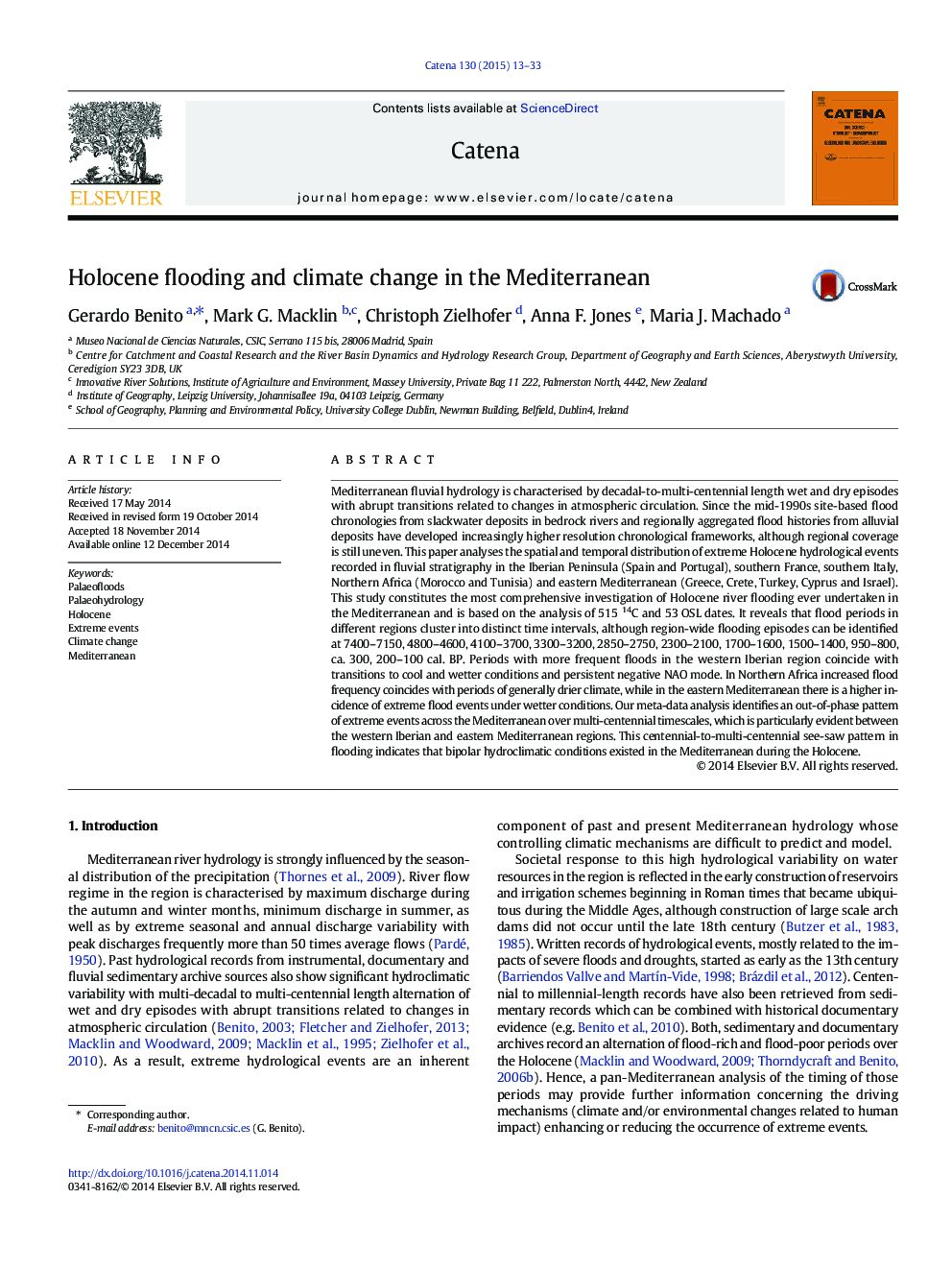| کد مقاله | کد نشریه | سال انتشار | مقاله انگلیسی | نسخه تمام متن |
|---|---|---|---|---|
| 4571145 | 1629222 | 2015 | 21 صفحه PDF | دانلود رایگان |
• A meta-data analysis of dated fluvial units shows eleven region-wide flood episodes.
• Flood clusters were related to atmospheric circulation patterns controlled by climate.
• Western Mediterranean flooding increased in cool and wet conditions and negative NAO.
• North African flood episodes coincide with periods of generally drier climate.
• An east-west Mediterranean sea-saw flood pattern implies bipolar climatic behaviour.
Mediterranean fluvial hydrology is characterised by decadal-to-multi-centennial length wet and dry episodes with abrupt transitions related to changes in atmospheric circulation. Since the mid-1990s site-based flood chronologies from slackwater deposits in bedrock rivers and regionally aggregated flood histories from alluvial deposits have developed increasingly higher resolution chronological frameworks, although regional coverage is still uneven. This paper analyses the spatial and temporal distribution of extreme Holocene hydrological events recorded in fluvial stratigraphy in the Iberian Peninsula (Spain and Portugal), southern France, southern Italy, Northern Africa (Morocco and Tunisia) and eastern Mediterranean (Greece, Crete, Turkey, Cyprus and Israel). This study constitutes the most comprehensive investigation of Holocene river flooding ever undertaken in the Mediterranean and is based on the analysis of 515 14C and 53 OSL dates. It reveals that flood periods in different regions cluster into distinct time intervals, although region-wide flooding episodes can be identified at 7400–7150, 4800–4600, 4100–3700, 3300–3200, 2850–2750, 2300–2100, 1700–1600, 1500–1400, 950–800, ca. 300, 200–100 cal. BP. Periods with more frequent floods in the western Iberian region coincide with transitions to cool and wetter conditions and persistent negative NAO mode. In Northern Africa increased flood frequency coincides with periods of generally drier climate, while in the eastern Mediterranean there is a higher incidence of extreme flood events under wetter conditions. Our meta-data analysis identifies an out-of-phase pattern of extreme events across the Mediterranean over multi-centennial timescales, which is particularly evident between the western Iberian and eastern Mediterranean regions. This centennial-to-multi-centennial see-saw pattern in flooding indicates that bipolar hydroclimatic conditions existed in the Mediterranean during the Holocene.
Journal: CATENA - Volume 130, July 2015, Pages 13–33
